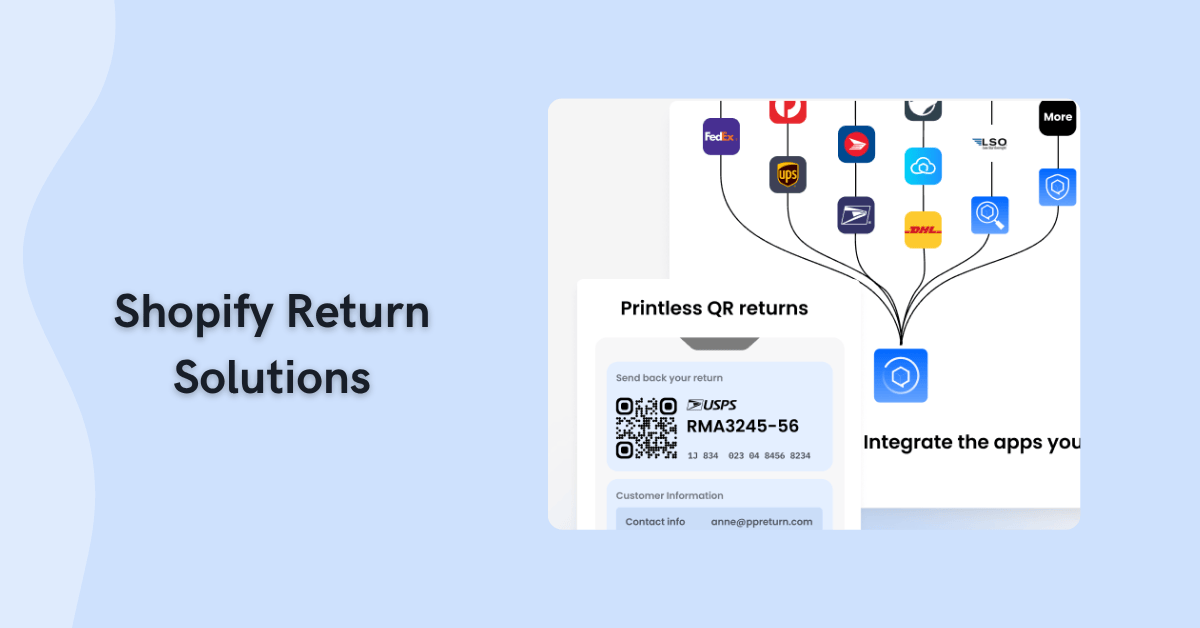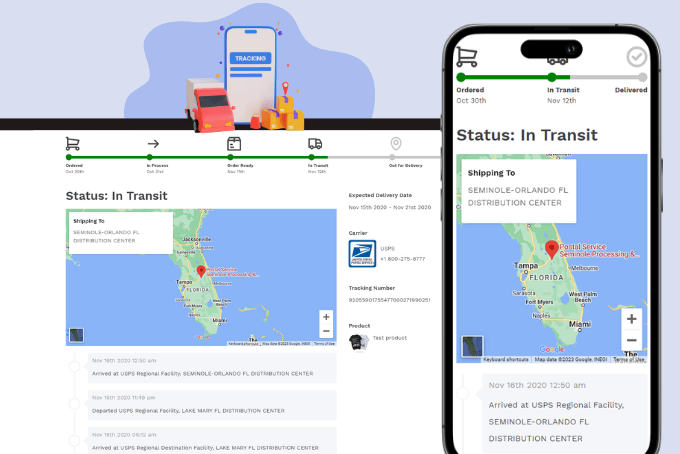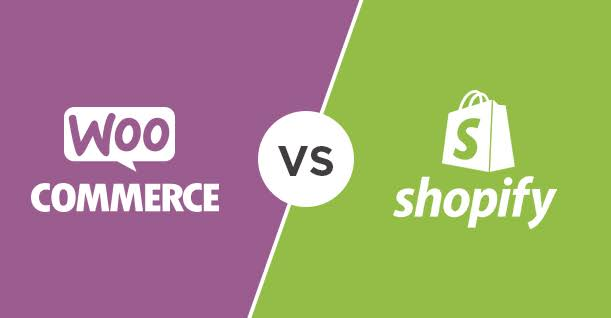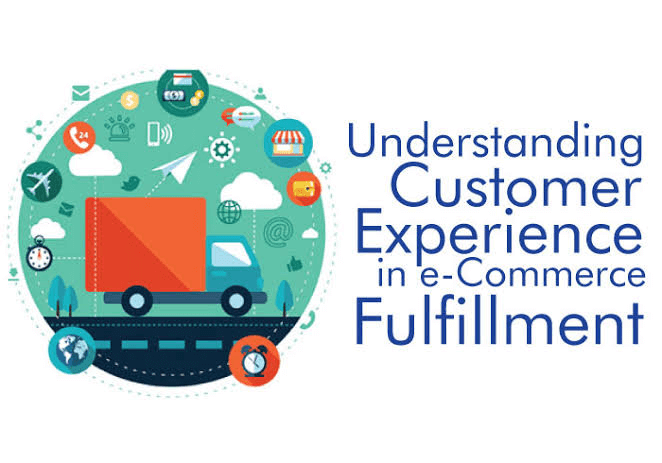Costly Returns? Effective Return Solutions for Shopify Merchants

Does your return process cost you so much money and stress? Maybe you've been processing too many refunds lately and just want to get out of this expensive cycle. Today's the day to say goodbye to it.
In this article, we'll share return solutions strategies from successful Shopify merchants we've worked with. You'll learn how to reduce return costs, create a solid return management system, and apply proven techniques that keep more revenue in your business.
The Hidden Costs of Returns
We all know that returns take a part (or sometimes all) of your revenue, but it actually affects your business more than you imagine. It brings additional costs like reverse shipping, restocking fees, inventory inspection, and warehouse labor.
Plus, manual return processes often consume customer support time... as they need to monitor and exchange messages with customers about return status, refund timelines, and shipping instructions.
However, the impact of inefficient returns extends far beyond just monetary costs. The negative effects on customer experience can seriously damage customer loyalty and brand reputation. You can lose the chance of getting repeat buyers and receive negative reviews because of the poor returns process.
The Foundation of an Effective Returns Process
Okay. You already have an idea of how costly returns are. So how can you create an effective return process that protects your profits and also benefits your customers?
The key to a good returns solution goes beyond "refunds." You also have to work on:
Writing clear and accessible policies
One ICSC research mentioned that 82% of customers review return policies before purchasing. If your policy is satisfying enough, then you can expect that your customer's confidence in buying from you will increase. And when that happens, your sales will also go up.
Getting reliable return management software
You'll need a tool that will help you handle the process better and provide features that will give more options to your customers (to keep your revenue).
Training your team
Your support team should know your return policy and process by heart so they can guide customers towards exchanges instead of refunds, suggest store credit with bonus incentives, or recommend alternative products that better fit their needs.
Collecting and using return data
The best way to learn and improve is through learning the top reasons for returns, customer behaviors, and product or delivery issues you have to pay attention to.
Simplifying the return process
92% of shoppers will buy from you again if returning products is easy. You can make that possible with a branded self-service portal and clear communication of the return status.
If you follow this foundation and ace the basics, you won't have to deal with a messy returns process anymore.
Advanced Features for a Reliable Returns System
When looking for a good return management system, always remember to look for the following features:
#1 Automated Label Generation and Self-Service Portal
Return labels usually add friction for both you and your customers. While some merchants pass the responsibility to their customers, we don't recommend this as it creates extra work and can hurt your customer experience.
So, it's better to pick a shipping platform that automatically creates return labels when customers request them.
On top of that, offering a self-service returns portal is also important for reducing support workload and improving customer satisfaction. It's your customer's choice on when to start their return, what reason to select, and whether they want an exchange or refund.
#2 Status Notifications and Workflow Optimization
One of the most effective ways to cut down on "Where's my refund?" emails is through automated status notifications. These notifications work best when they're sent at important milestones, like when you receive the item, approve the return, or process the refund.
What about workflow optimization? This is where you set up auto-approvals for some products and restrictions.
#3 Return Protection Coverage
Most stores offer "shipping protection," which is something that customers can check before they place their order. But did you know that you can also offer return protection?
Look for a platform that allows you to give customers the option to cover their return shipping costs at checkout. For a small fee, you can give your customers the peace of mind... and also remove the financial burden from your business.
#4 Built-in Fraud Prevention Tools
Return fraud costs businesses a lot of money. One research from Security mentioned that 90% companies lose up to 9% of their revenue to fraudulent claims.
The good news is that modern return platforms come with built-in tools to catch these problems before they hurt your profits.
For example, they allow you to keep customers' data and track return history. Some also allow you to change eligibility rules or customize return policies depending on who's making the request or what they're returning.
Here are some additional tips to prevent fraud:
- Require photo evidence for returns claiming damage or defects.
- Set automatic flags for customers who return items more than three times within a 90-day period.
Popular Returns Solutions for Shopify
There are so many returns management apps available for Shopify stores, but some of the best we've tried are these five platforms that handle everything from basic return processing to advanced fraud prevention.
ParcelPanel Returns & Exchanges: Helps Shopify merchants keep more revenue by encouraging customers to exchange their items. The platform also connects you with top global carriers and offers a branded self-service portal where customers can easily process (and monitor) their own returns.
Loop Returns: Built to turn return requests into upselling opportunities through instant exchanges and customer incentives. Customers can swap items for any product in your store catalog, and the platform handles warranty claims and in-store returns for omnichannel businesses.
ReturnGO: Focuses on waste reduction and profit generation from returns management. The platform offers unlimited returns processing and lets you create different return rules based on customer types or product categories.
AfterShip Returns Center: Pushes customers toward exchanges and store credit while offering automation tools and global carrier support. You get branded return pages, automated status notifications, and direct shipment tracking in one platform.
ClickPost Returns Plus: Designed to improve customer retention through smoother return workflows. You'll get customizable return portals, automated approval systems, and detailed analytics to understand return patterns.
If you don’t know which one to try, we recommend ParcelPanel. It’s affordable (but scalable) and also works well for small to medium-sized Shopify stores.
Best Practices for Returns Management
Some of the best practices we'd like to share with you are using data to spot product issues, offering exchanges instead of refunds, and making your return shipping process more efficient. Let's talk about them more.
Tip #1: Use Your Return Data to Identify Problems
Your returns data tells you exactly what's going wrong with your products. Instead of just processing returns and moving on, dig into the patterns to fix problems at their source.
Track and analyze your return patterns by looking at:
- Return reasons by category: Are most returns due to sizing issues, quality problems, or items not matching descriptions?
- Product-specific return rates: Which items get returned most often and why?
- Return timing patterns: Do returns spike during certain seasons or after specific promotions?
- Customer feedback from return requests: What are people actually saying when they send things back?
Tip #2: Guide Customers Toward Exchanges and Store Credit
We all know how refunds threaten your overall sales, and as a merchant, it's one of the important things you have to protect (besides your customers).
The best approach is to make exchanges and store credits much more appealing than refunds. Imagine you sold a medium shirt and the customer wants to return it because it's too small.
You can offer them a large size in the same style with free exchange shipping, or... provide store credit worth 110% of the original purchase price.
Tip #3: Make Return Shipping Work Efficiently
How long does it take your team to handle a single return request? If it's taking too long or if your customers need to make more effort, it'll definitely ruin their experience.
What you can do is set up automatic return label generation so customers get what they need immediately.
If the return request is for small or not-so-pricey items, you can automate (or auto-approve) the entire process. But for high-value orders, we suggest you set stricter eligibility rules and require manual approval. This is to protect your business from fraud.
Your ultimate goal here is to make returns as "frictionless" as placing regular orders.
Tip #4: Reducing Returns Before They Happen
"The best way to deal with returns is to prevent them from happening." This is what we usually tell our clients, but... how can you do that?
First, you need to provide clear product descriptions and size charts to avoid any guessing on your customer's side. Specify the type of materials used and include detailed measurements.
Let's say you're selling women's tennis attire. Besides the usual small, medium, and large, add the actual chest, waist, and hip measurements in inches. Or if you're selling shoes, include sizing for different regions like the US, UK, EU, etc.)
High-quality photos are also a must. Take On (a shoe brand), as an example. It shows multiple angles, close-ups that let you zoom in on fabric texture, and detailed shots from the side, top, and bottom. That's on top of specific features and materials.

One of the most effective ways to avoid future returns is through customer reviews. You can convince your existing buyers to share photos of them wearing or using your products and provide feedback on how good (or bad) it is, and whether they encounter any issues while using the item.
If you look at customer reviews more than a simple "rating" and brand boost, they become a powerful tool for improving your products and descriptions, and setting accurate expectations.
The Future of Returns Solutions
What could we expect in the future of returns solutions and processes? Let me share some new trends and practices that are already making waves in the industry.
AI-powered sizing tools are helping fashion brands cut down on fit-related returns (which make up a huge chunk of clothing returns). These intelligent recommendations learn from past purchases and customer feedback to suggest better sizes before people buy.
Sustainability is also changing how stores handle returns. 66% of customers go for brands that value eco-friendliness. That’s why more retailers are setting up local drop-off spots to cut shipping costs and carbon emissions. Some even encourage their customers to keep the items and receive store credit or partial refunds instead of exchanging the items.
Here's what we're sure of: return experience is now an important part of your loyalty strategy. When customers have a smooth return process, they're more likely to buy from you again… but a frustrating return experience does the opposite.
Final Words
The returns process doesn't have to drain your profits or create headaches for you and your team. You just have to build a good system with the right foundations and platform. Once you do, you'll be able to improve customer loyalty and bring more revenue (something every business owner wants).
ParcelPanel Returns and Exchange helps merchants achieve up to 40% reduction in return losses with automated notifications, branded return pages, and flexible exchanges that encourage customers to swap items.
Ready to have an effective returns process? Book a demo with our team today.
Returns Solution FAQs
How to handle returns in ecommerce?
To handle returns in ecommerce, you need to have a clear return policy and good return management software. Your return policy should be visible on your website and easy to understand. And with reliable return management software, automate label generation, return tracking, customer notifications, and reporting.
How much does ecommerce return cost?
There's no exact figure that applies to all, but a single return can cost 20% to 65% of the product's original price, according to Shopify. So, for a $150 item, you're looking at $30 to $98 additional costs.
What is a good return rate for ecommerce?
Most stores see 10-20% as acceptable, but it still depends on what you're selling and your sales performance. If you're return rate is below 10%, then that means you're doing great.
What happens to ecommerce returns?
Once you receive a returned item, you have to inspect it first. Items in good condition go back to your inventory for resale, but damaged or worn items might get refurbished or disposed of. Meanwhile, your customer gets their refund, store credit, or exchange based on your policy.










![Top 10 Route Alternatives & Competitors [2026]](https://blog.parcelpanel.com/wp-content/uploads/2025/11/Route-Altenatives.png)

![Top 10 parcelLab Alternatives & Competitors [2026]](https://blog.parcelpanel.com/wp-content/uploads/2025/11/AfterShip-Altenatives-9.png)
















